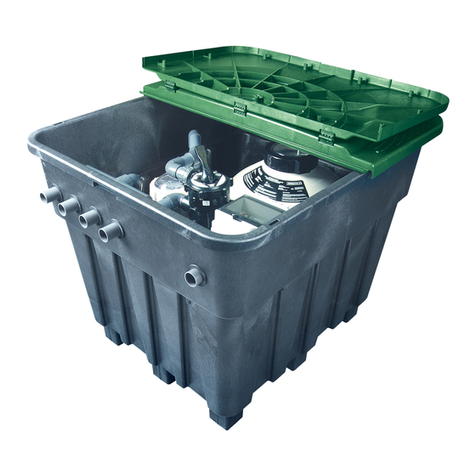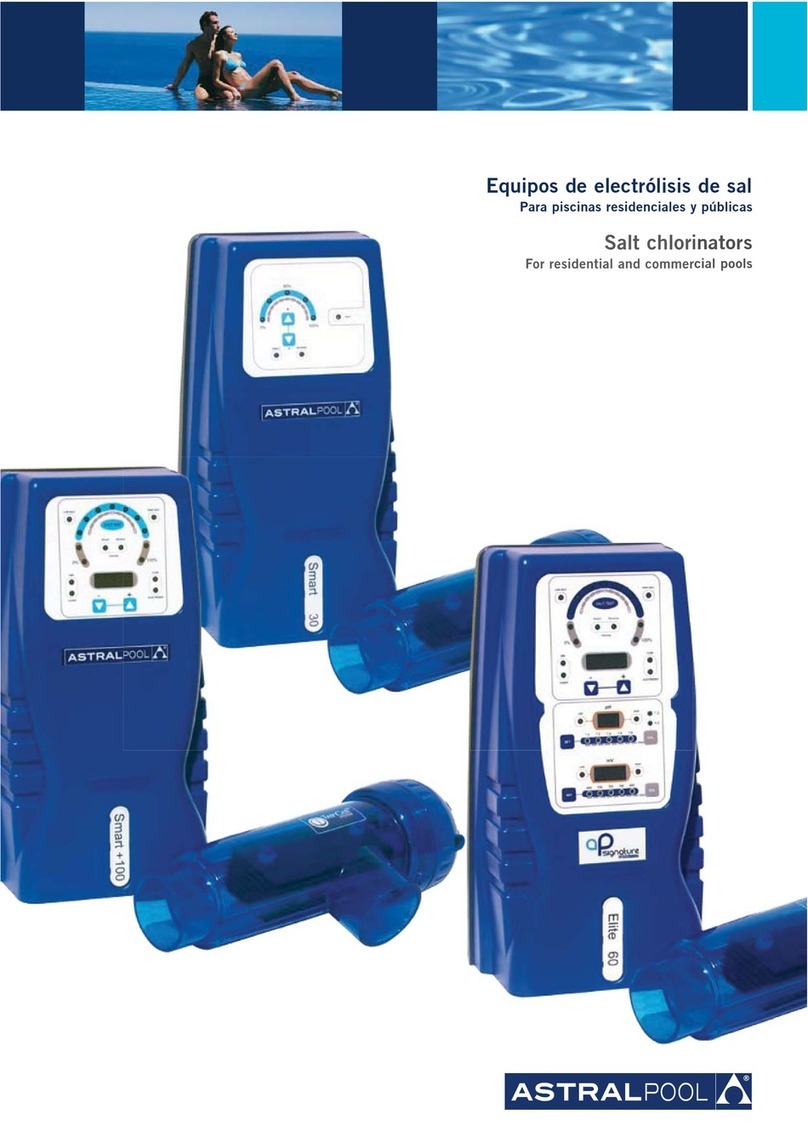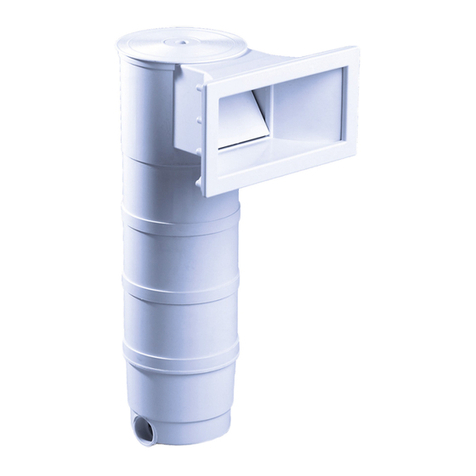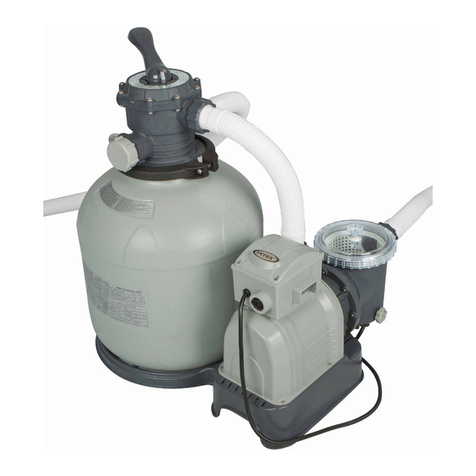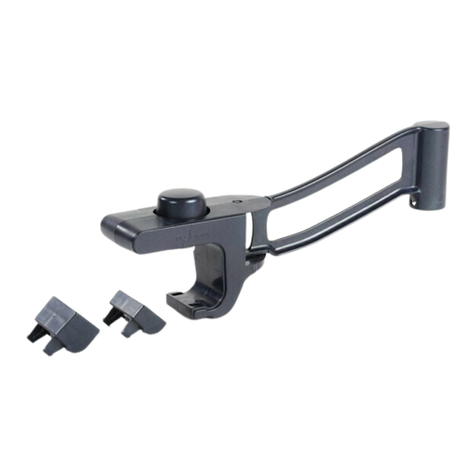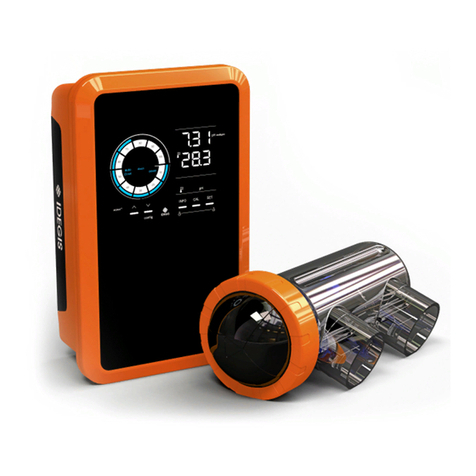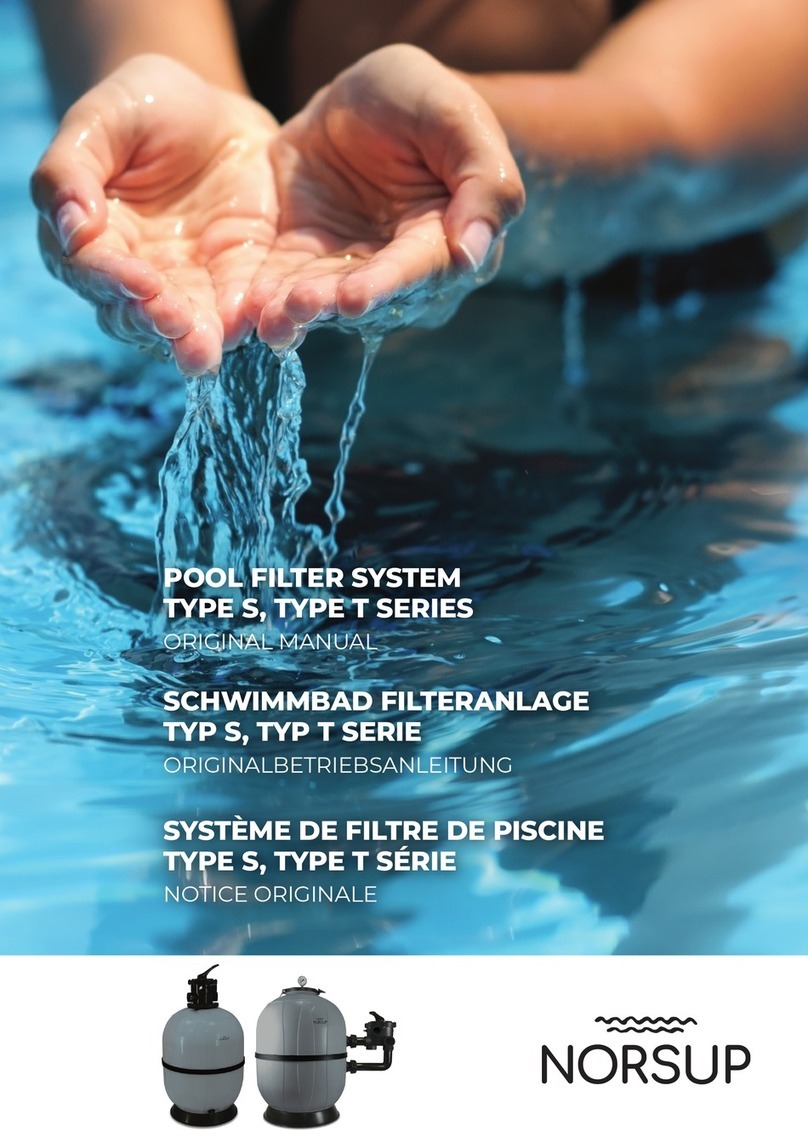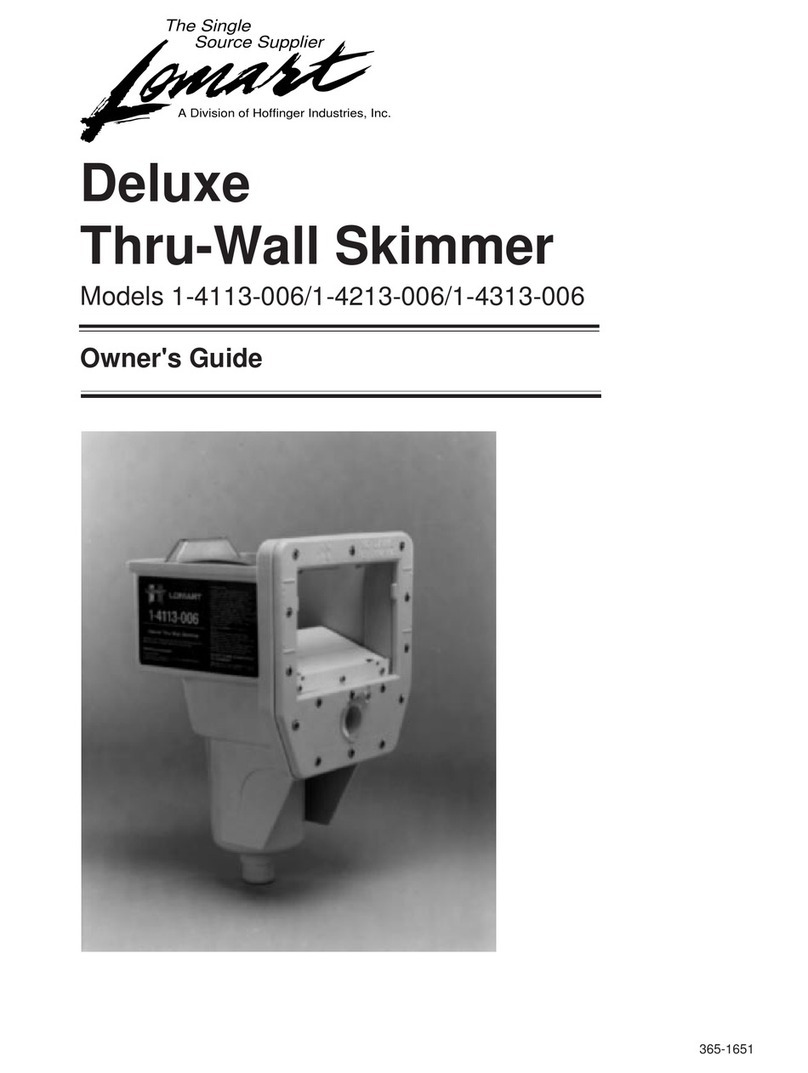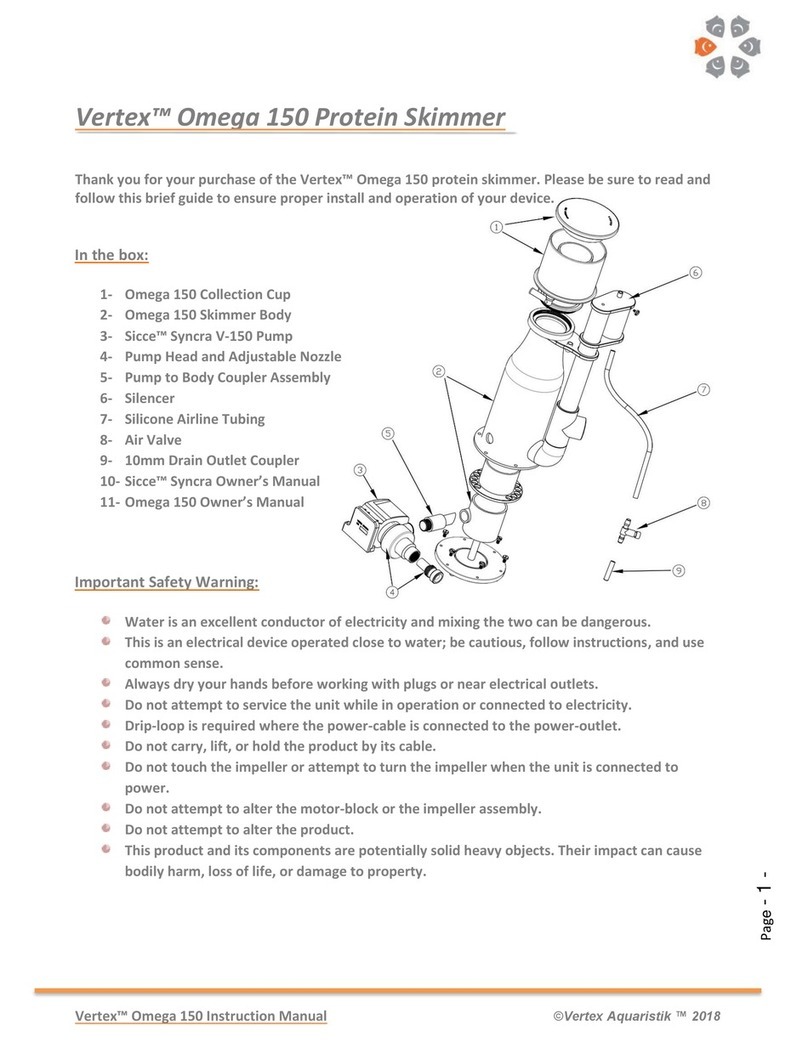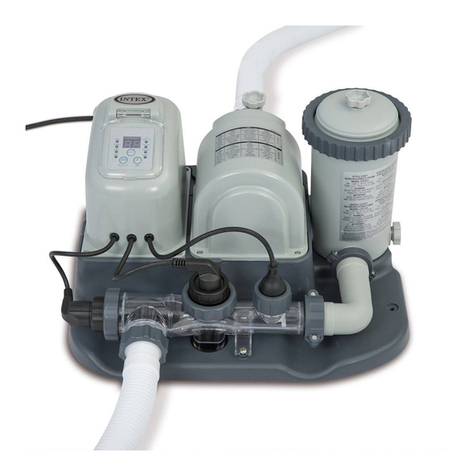WaterStep M-100 User manual

Save Lives with Safe Water
INSTRUCTION MANUAL
WaterStep M-100 Chlorine Generator
WaterStep
625 Myrtle St.
Louisville, KY 40208 USA
+1.502.568.6342
waterstep.org
Read these instructions
in order to safely and
effectively use this
product.

CONTENTS
IMPORTANT SAFEGUARDS
1.
2.
3.
4.
5.
6.
7.
8.
9.
Important Safeguards ...............................................................................................................
Warnings ...................................................................................................................................
What the M-100 Chlorine Generator Does ...............................................................................
What is Included with the M-100 Chlorine Generator ............................................................
What You Need to Supply Locally ............................................................................................
Installing the M-100 Chlorine Generator ...............................................................................
Operating the M-100 Chlorine Generator ............................................................................
Shutting Down the M-100 Chlorine Generator ....................................................................
What to Do with the By-Products .............................................................................................
When using the WaterStep M-100 Chlorine Generator, you should always follow basic safety
precautions:
Read all instructions!
Allow only responsible adults who are familiar with the instructions to operate the M-100.
The M-100 produces by-products of liquid chlorine and sodium hydroxide. Use caution
when draining the M-100 of these by-products. Rinse any spills immediately.
Store these by-products in bottles that are not used for drinking. Using a permanent
marker, clearly mark the bottles CHLORINE and SODIUM HYDROXIDE. Also write in
large words: POISON - DO NOT DRINK. These by-products can be harmful or
fatal if swallowed!
The side of the M-100 labeled CHLORINE produces chlorine gas when the unit is
operated as instructed. Do not open the ll tube and breathe the fumes.
When draining and rinsing the M-100, be careful not to spill chlorine or sodium
hydroxide on your skin or clothes, or splash it in your eyes. You should wear eye
protection.
To protect against shock, sparks or explosion, never place tools on or near the 12-volt
battery.
Never leave the M-100 running unattended.
Avoid over-chlorinating the water by testing chlorine levels frequently as
instructed in this manual. If the water is over-chlorinated, add water to dilute the
chlorine to 5 PPM (Parts Per Million).
SEE WARNINGS ON PAGE 2
1
2
3
4-6
6
7-10
11-15
16-17
18
1

THE WATERSTEP M-100 CHLORINE GENERATOR
GENERATES CHLORINE GAS TO PURIFY WATER. IT DOES
SO SAFELY WHEN USED AS INTENDED BY PEOPLE WITH
PROPER TRAINING. BUT IT CAN BE DANGEROUS IF NOT
USED CORRECTLY.
The M-100 uses salt (sodium chloride, or NaCl) and
direct current (DC) electricity to produce chlorine gas
(Cl2) and sodium hydroxide (NaOH). You should
use the M-100 only after you get proper
training on how to run it and monitor chlorine
levels.
Chlorine destroys disease-causing organisms in water
and is the most commonly used disinfectant in all
regions of the world. It does not kill all viruses,
bacteria or protozoa.
Chlorine does NOT remove salt from salt water. It does NOT remove toxic chemicals. So
water treated with the M-100 could still contain harmful chemicals. When
possible, you should get your source water tested by a certied lab to see what it has in it.
The M-100 can chlorinate water up to a level of 5 PPM (parts per million), but no third
party or government agency has tested the M-100 for how effectively it kills bacteria or other
microbes or viruses. Use the M-100 and the water it produces at your own risk.
DANGER: The M-100 produces chlorine gas (Cl2) and sodium hydroxide (NaOH).
Chlorine gas is poisonous - which is
why it kills bacteria and other microbes.
But it is also poisonous to humans and
animals. If you breathe it in, it can burn
your lungs. It can also burn your eyes
and your skin.
Sodium hydroxide (NaOH) can cause
severe skin irritation and burns.
Use the M-100 in a well-ventilated area. Do not breathe in gas from any ports or tubes. Handle
the liquid chlorine and sodium hydroxide it produces very carefully, and put them only in con-
tainers with large, clear labeling.
2
POISON
GAS
DANGER
TOXIC
MATERIALS
DANGER

The WaterStep M-100 Chlorine Generator was developed in response to a need that affects
nearly one billion people around the globe . . . unsafe drinking water. In fact, waterborne
disease claims more lives each day than armed conict, HIV/AIDS, and cancer combined.
For more than 140 years, chlorine has been added to water to kill disease-causing bacteria
and pathogens. The M-100 is a portable, affordable way to chlorinate water for the purpose of
eliminating waterborne pathogens.
Through the process of electrolysis, the M-100 creates chlorine gas from salt water. The chlo-
rine gas, which evenly disburses throughout the water, kills waterborne bacteria in two hours.
As contaminated water circulates through the system, chlorine gas is injected into the water.
When the water has reached the recommended chlorine level of 5 PPM - and still has a 2 PPM
chlorine level after setting for two or more hours - the waterborne pathogens have been killed.
The M-100 does not remove salt from seawater. It will also not remove heavy metals or
chemicals.
WHAT THE M-100 CHLORINE GENERATOR DOES
3

WHAT IS INCLUDED WITH THE M-100 CHLORINE GENERATOR
625 Myrtle Street
Louisville, KY 40208
001.502.568.6342
WaterStep.org
Training & Technologyto
Heal a Thirsty World
waterstep.org
M-100 Chlorine
Test Kit
1 2
4
5 6
3
Two 5/8” (16mm)
I.D. Hoses
One 1/4” (6mm) I.D. Tube
(Chlorine Gas Tube)
Submersible Pump
Water Bottle Parts Bag (Replacement parts)
Chlorine Injector,
Heat Exchanger
Heat exchanger Chlorine
Injector
4

WHAT IS INCLUDED WITH THE PARTS BAG (Replacement parts)
1
3 4
5 6
7 8
2
Chlorine Test Kit
All of the parts marked “replacement part” are extra parts that can be used if the parts on
the purifer are lost are broken.
Zip Ties Teon Tape
(Replacement part)
Barb Fitting (Male)
(Replacement part)
Barb Fitting (Female)
(Replacement part)
1” (25mm) Plug for
Fill Tube
(Replacement part)
Hose Clamps
(Replacement parts)
Measuring Cup
5

WHAT IS INCLUDED WITH THE PARTS BAG Continued
WHAT YOU NEED TO SUPPLY LOCALLY
1. 12-Volt DC battery (deep cycle/marine type is best)
2. Solar or electric battery charger for 12-Volt battery
3. Salt/Sodium Chloride (any quality table salt)
4. Slotted screwdriver
5. Measuring tape
6. Large pair of pump pliers
7. Bucket to collect rinse water
8. Water storage tank(s)
9
11 12
10
Two Drain Tubes
(Replacement parts)
Small Barb
(Replacement part)
Small Barb with Hose
(Replacement part)
Extra Insertion Tube
(Replacement part)
6

INSTALLING THE M-100 CHLORINE GENERATOR
1
2
3
Remove the M-100 from the box
and bubble-wrap packaging.
Use zip ties, rope, wire or chain to attach the
M-100 securely to a water tank or other
support; or secure it rmly to the ground/deck.
Attach the end of the 5/8” (16mm) hose with
the male barb to the outlet side of the
circulation pump. Secure with hose clamp.
7

INSTALLING THE M-100 CHLORINE GENERATOR Continued
4
5
Attach the opposite end of this hose to the barb
tting on the short side of the heat exchanger.
Tighten the hose clamp as needed.
*The injector (sometimes called
a “Venturi”) is the device that
pulls chlorine gas from the
M-100 Chlorine Generator and
injects it (the chlorine gas) into
the water. The injector is con-
nected to the heat exchanger
(the U-shaped piece of piping)
during manufacturing. The injec-
tor is a vital part of the M-100.
Without the injector the M-100
will NOT function.
Heat exchanger Black injector
Attach the other braided hose to the barb
tting on the black injector*. Use hose clamp
to tighten.
8

INSTALLING THE M-100 CHLORINE GENERATOR Continued
6
7
Air vent
Slide the heat exchanger into the oval-shaped
opening on top of the M-100.
Place the braided hose with circulation pump
into the water tank, leaving the wires hanging
outside of the tank.
9

CHLORINE
GAS
INSTALLING THE M-100 CHLORINE GENERATOR Continued
8
9
Place the braided hose attached to the
injector into the tank that will collect/store the
chlorinated water. Note the arrow on the
injector showing the direction of the water ow.
Single tank set-up
Attach the 1/4” (6mm) Chlorine Gas tube to
the injector on one end, and the top of the
M-100 on the other end.
CHLORINE
GAS
Air vent
labled
VENT
10

OPERATING THE M-100 CHLORINE GENERATOR
BEFORE OPERATING THE UNIT:
OPERATING THE UNIT:
1
2
3
These instructions assume that you have a tank or cistern of water that needs to be
chlorinated. It also assumes that you have a means to dispense the water from the tank after
it is treated.
1. Make sure the drain tubes (red and black) at the bottom of the M-100 are clamped shut by
the pinch clamps.
2. The 1” (25mm) plug on the ll tube should be “hand tight”. Do NOT overtighten! Tape
threads on plug as needed.
3. Conrm the “vent” hole on the chlorine side is unobstructed and open to the atmosphere.
4. Make sure you have a fully charged 12-volt DC battery.
Place about 400ml of water into the empty
water bottle.
Fill the metal measuring cup one and a half
times (1-1/2) with table salt (this will be about
125g or 4.5 oz of salt). If rock salt is used, rst
pound it to small particles before mixing it with
water.
Place cap on water bottle and shake the
mixture to allow the salt to completely
dissolve.
NOTE: NEVER add more salt to the M-100
Chlorine Generator after you have started the
chlorination process.
625 Myrtle Street
Louisville, KY 40208
001.502.568.6342
WaterStep.org
Training & Technology to
Heal a Thirsty World
11

OPERATING THE M-100 CHLORINE GENERATOR Continued
4
5
Remove the 1” (25mm) plug from the ll tube.
Pour the solution of water and salt into the
chlorine generator. Add more water until it
reaches the maximum ll line.
NOTE: If chlorinating large volumes of water
(10,000 gallons/ 37,854 liters or more), keep an
eye on the “Minimum Line”. If the chlorine level
drops below the minimum line sticker, STOP the
chlorination process and remix a NEW solution
of salt and water. Drain the existing chlorine out
of the M-100 (see p.16) and save it. Add the new
solution of salt and water. Resart the process and
continue with the chlorination process.
625 Myrtle Street
Louisville, KY 40208
625 Myrtle Street
Louisville, KY 40208
001.502.568.6342
WaterStep.org
Training & Technology to
Heal a Thirsty World
MAXIMUM LINE
12

OPERATING THE M-100 CHLORINE GENERATOR Continued
6
7
Pour approximately 600ml of water (or
recycled sodium hydroxide) into the oval-
shaped hole at the top of the M-100. If you are
using plain water, add about ve grams of salt
(1/2 teaspoon) into this compartment. This will
generate chlorine more quickly.
Connect the wires from the circulation pump to
the battery terminal (black to negative/-, red to
positive/+). Once water is owing through the
system, check for any water leaks. If leaks or
drips are found, adjust the tubing.
625 Myrtle Street
Louisville, KY 40208
625 Myrtle Street
Louisville, KY 40208
001.502.568.6342
WaterStep.org
Training & Technology to
Heal a Thirsty World
13

OPERATING THE M-100 CHLORINE GENERATOR Continued
8
9
Connect the wires from the chlorine generator
to the battery (black to negative/-, red to
positive/+).
Once the water is owing, and the M-100 is
running, look for bubbling action in the
Chlorine side and small bubbles forming in the
Sodium Hydroxide side. This indicates that the
M-100 is working properly.
Sodium Hydroxide
Air vent
Chlorine
14

OPERATING THE M-100 CHLORINE GENERATOR Continued
10
11
12
13
Use the chlorine test kit to test chlorine levels
in the water. Get a sample from below the sur-
face of the tank. Add one drop of Orthotolidine
and shake the tester to mix. Match the color of
the water with the color standard on the tester.
Continue running the M-100 until the chlorine
level reaches 5 PPM (Parts Per Million). The
time this takes will depend on the size of the
tank and the quality of the source water.
When the chlorine level reaches 5 PPM, remove the 1/4” (6mm) chlorine tube from the
venturi. Then, disconnect both the submersible pump and the M-100 from the negative
and then the positive side of the battery.
Allow the treated water to sit for one hour and then re-check the chlorine levels. Levels
should be 2 PPM or more. If the chlorine level is lower than 2 PPM, run the chlorination
process again and allow the water to stand for one additional hour and re-test. If the
chlorine levels are between 2 and 5 PPM, it is safe to drink.
NOTE: If your test kit is no longer yellow and has turned amber or red, there is too
much chlorine in the water.
NOTE: Because different water sources have different minerals, no minerals, different
levels of turbidity, etc. they chlorinate at different rates. The rst time you run the M-100,
you should test the water every minute or so. After you have gone through the process
several times, you will be able to better judge how how long it takes for your water to
become chlorinated and how often you need to test it. If in doubt, TEST, TEST, TEST! It
is much easier to ADD chlorine than to dilute it down.
5
3
2
1
.5
15

1
2
Loosen and remove the plug at the top of the ll tube on the CHLORINE side. Keep
your face away from the ll tube and DO NOT INHALE THE CHLORINE GAS!
Insert the (red) drain tube at the bottom of the
Chlorine side of the M-100 into the top of the
empty container labled CHLORINE. Release
the pinch clamp and let all the chlorine pour
into the container. Keep your face away from
the opening of the empty container and DO
NOT INHALE THE CHLORINE GAS!
NOTE: Sodium Hydroxide will vary in strength
depending on how often you REUSE the
Sodium Hydroxide from previous chlorination
batches. Sodium Hydroxide will get stronger
and stronger with each use.
DO NOT ALLOW MORE THAN THREE
CHLORINATION PROCESSES WITH THE
SAME BATCH OF SODIUM HYDROXIDE. IT
WILL GET VERY STRONG AND WILL BURN
YOUR SKIN IF SPILLED.
SHUTTING DOWN THE M-100 Continued
Before the M-100 is completely shut down and stored, have two empty containers - each of
which will hold up to two liters of liquid. Use a permanent marker to write CHLORINE on one
container and SODIUM HYDROXIDE on the other container. Please write POISON - DO NOT
DRINK on each bottle as well. DO NOT USE SODA BOTTLES...EVER!
CHLORINE
POISON - DO NOT DRINK
16

3
4
5
Squeeze/engage the pinch clamp. Fill the
water bottle with plain water and pour into the
chlorine side of the M-100. Rell and drain this
side three times. Collect rinse water in a
bucket. Keep your face away from the
opening of the ll tube and drain tube.
DO NOT INHALE THE CHLORINE GAS!
Repeat the process for the Sodium
Hydroxide side, pouring the rinse water into the
oval-opening on top of the M-100. Collect the
rinse water in the same bucket. Keep your face
away from the opening of the ll and drain tubes.
DO NOT INHALE THE CHLORINE GAS!
Wipe down the exterior of the
M-100 with a cloth to remove dirt
and moisture.
Always protect your eyes and skin. Keep
all solutions out of eyes and avoid
breathing fumes. Keep all solutions away
from children. Store solutions in a safe
place.
IMPORTANT: Recharge the 12-volt battery
with an electric battery charger or solar
panel.
SHUTTING DOWN THE M-100 CHLORINE GENERATOR Continued
625 Myrtle Street
Louisville, KY 40208
625 Myrtle Street
Louisville, KY 40208
001.502.568.6342
WaterStep.org
Training & Technology to
Heal a Thirsty World
17

If the by-products are not going to be used, both solutions can be poured into the same bucket.
They will neutralize each other into saline water and can be safely disposed of on the ground.
This neutralized solution will not harm the enviornment.
CONTACT US
WITH ANY QUESTIONS ABOUT THIS PRODUCT
Chlorine: The chlorine solution may be used as a household disinfectant and cleaning
agent. Dilute the solution by at least 1/2 with water.
Sodium Hydroxide: The sodium hydroxide solution can be re-used in the side of the
M-100 labled SODIUM HYDROXIDE. This will help the M-100 start much faster than if plain
water is used in this side. The sodium hydroxide may be used to kill mosquito larvae and
deodorize latrines. Dilute solution as needed.
625 Myrtle Street
Louisville, KY 40208 USA
+1.502.568.6342
waterstep.org
WHAT TO DO WITH THE BY-PRODUCTS
18
Other manuals for M-100
1
Table of contents
Popular Swimming Pool Filter manuals by other brands

Jandy
Jandy CL Series Installation and operation manual
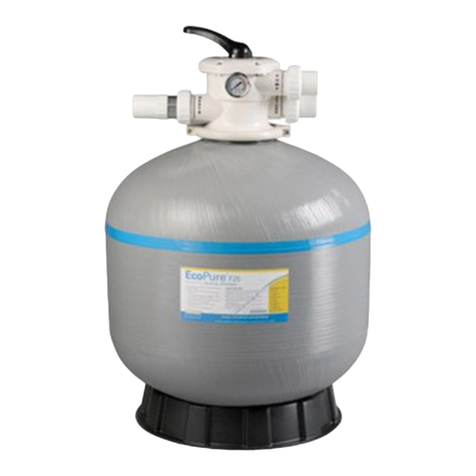
Davey
Davey EcoPure F14 Installation and operating instructions

Zodiac
Zodiac pH Perfect Owner's manual and warranty

JBF
JBF DIP 500 Operation and maintenance manual
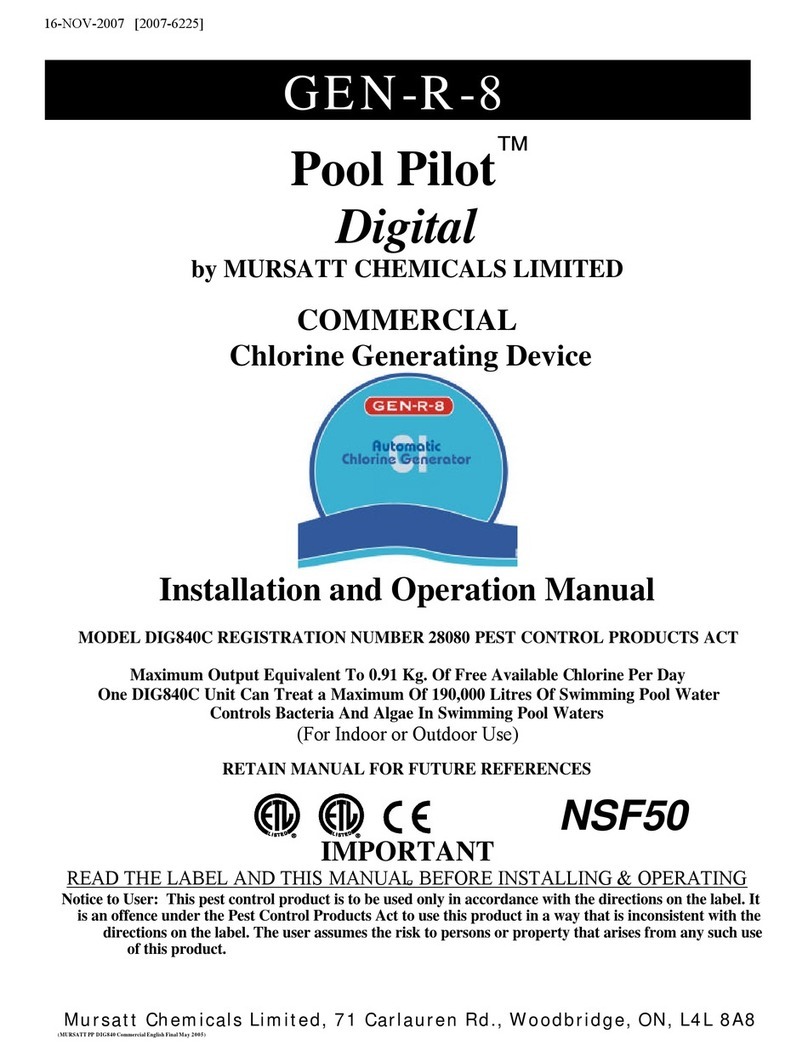
MURSATT
MURSATT Digital Pool Pilot GEN-R-8 Installation and operation manual
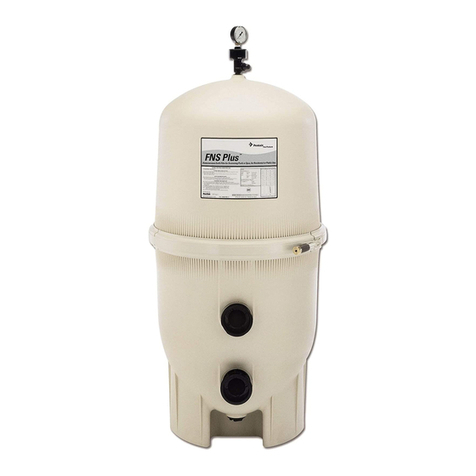
Pentair
Pentair FNS Plus Installation and user guide

